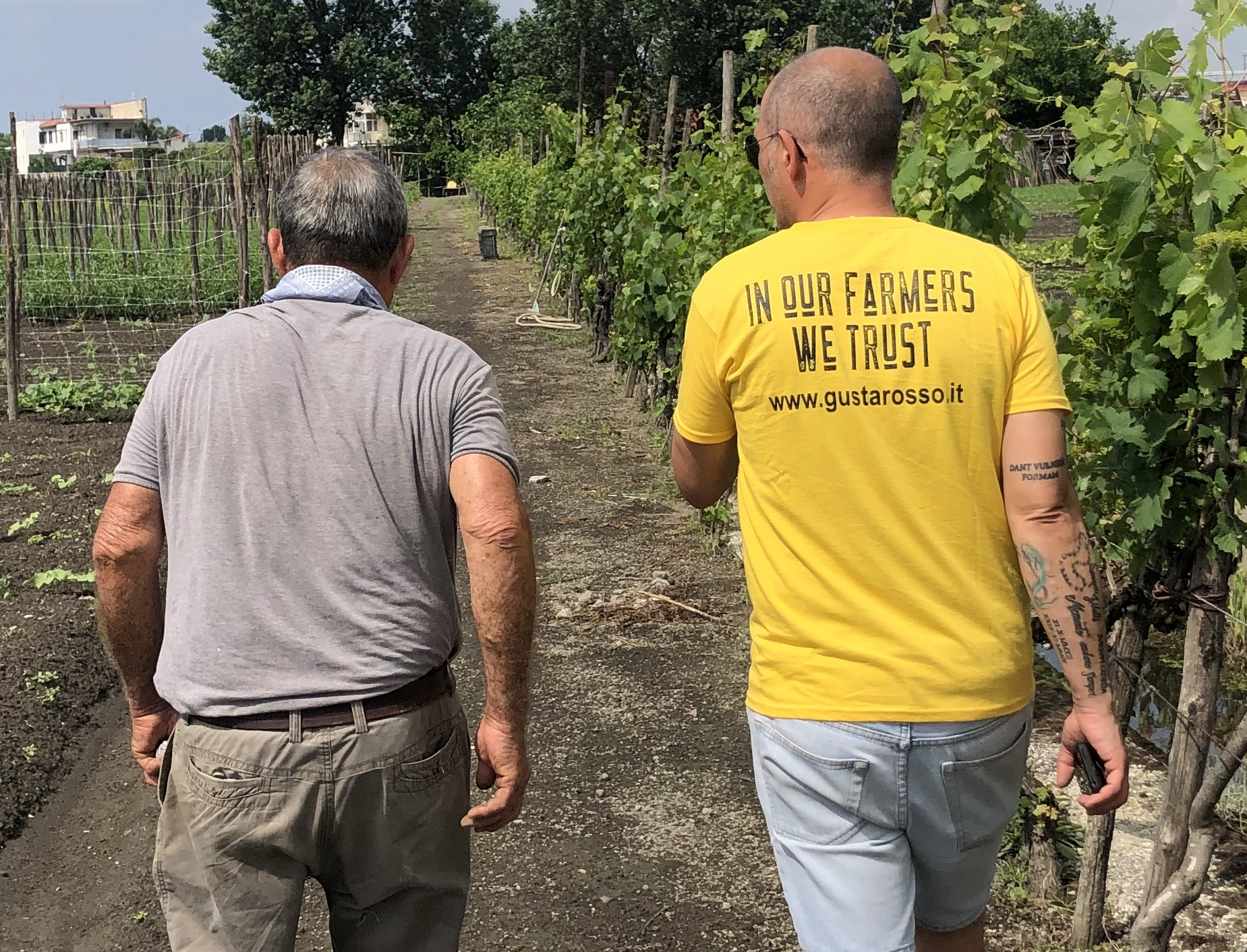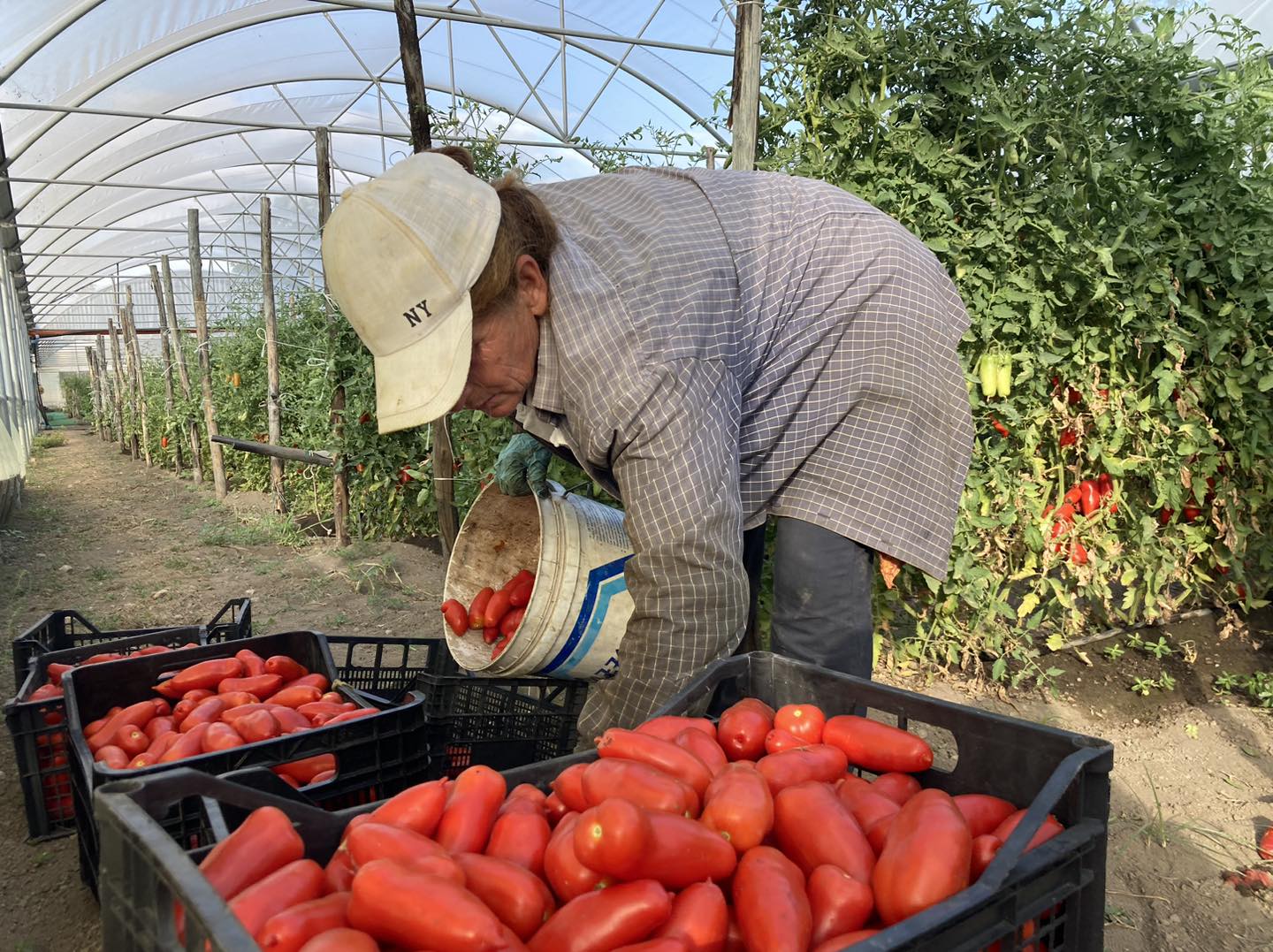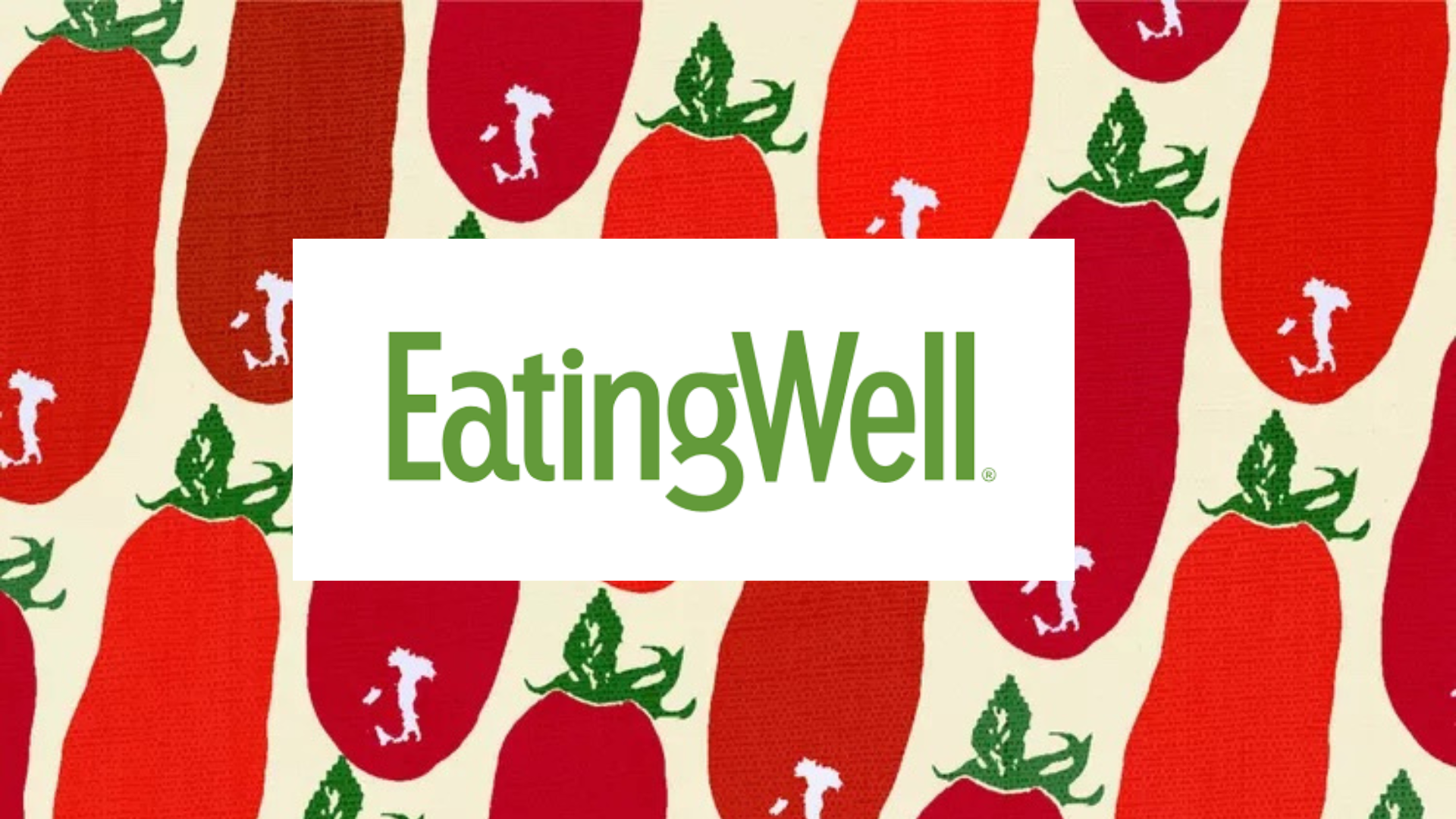Our dear friend + journalist Paul Greenberg came with us to the most popular tomato fields of Campania, to find out what makes a real DOP San Marzano. In his piece for Eating Well, Paul gets into how much work is involved, and how forgeries affect the honest Italian farmers on the ground.
Paul met Vincenzo Aufiero, or Zi’ Vincenzo as most people call him, who has cultivated San Marzano tomatoes in the foothills of Mt. Vesuvius for many of his 78 years. He’s an expert in the task. Every spring, he prepares the ground for the 8000 or so San Marzanos he’ll plant, maintain, and harvest during the summer. No part of this process is mechanized. He and the other 150 farmers supplying Gustarosso, our source of San Marzano tomatoes for more than 20 years, do all the work completely by hand.
This attention to detail, along with the seeds themselves and the volcanic soil where they grow, is what makes a “real” San Marzano tomato. The thing is that countless cans labeled “San Marzano” aren’t made this way at all.

Real San Marzano Tomatoes are about more than just great flavor
The problem lies in the numbers. San Marzano tomatoes can only be grown within a scant 740 acres surrounding Mt Vesuvius. They must be planted less densely than their industrial counterparts, and they must be tended to by hand throughout their life cycle. Paolo Ruggiero, who runs the cooperative Gustarosso, asked Paul:
“In all of the region that is certified to grow San Marzanos, we produce about 4 million cans of tomatoes per year. There are about 5.6 million people in the region of Campania alone. How can it be possible that so many cans in America labeled San Marzano are actually from [the region of] San Marzano?”
Well, they’re not. The name “San Marzano” is often slapped on any old can of pear-shaped tomatoes to fetch a higher price. This is personally offensive to Ruggiero and the 150 farmers supplying Gustarosso. Ruggiero’s ancestors were among the first to select the seeds that would become the now protected San Marzano. Eduardo, the patriarch of the Gustarosso company, told Paul:
“It makes me angry, I know there are Italians and Italian Americans making millions on something that’s fake. Meanwhile there are people in the field making way less money because we’re not in the lobbying business.”

Zi’ Vincenzo has a deep knowledge of his craft, the type that comes only with experience. Each year, he stakes his San Marzano plants to a piece of chestnut wood marked off in three sections. Each segment corresponds to one of three harvests that’ll occur over the course of the plants’ life: end of July, Ferragosto, end of September, from the bottom to the top. This ingenious approach ensures that each tomato will be picked at its absolute prime.
How to Recognize a Real San Marzano tomato
To make sure you’re paying for the real deal, Paolo and Eduardo Ruggiero suggest to look for:
- The form: The “San Marzano” designation applies only to whole or filleted tomatoes. “San Marzano” puree, chunks, or concentrate is a sign of fraud.
- The words: “San Marzano Style” is another sign of deceit. You’re not looking for a tomato in a particular style, but an actual, physical thing.
- The stamp: Be sure you see the telltale red and yellow DOP label clearly on the can. This is a sure sign you’re getting a real San Marzano.
Paul, thank you for being our friend in the good food fight and for asking all the good questions. Check out Paul Greenberg’s piece, “That Can of San Marzano Tomatoes Might Be Fake- Here’s How to Spot the Real Deal”.
